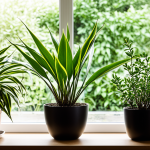Essential Pet Grooming Tips for UK Owners
Maintaining a consistent pet grooming routine is crucial for your UK pet’s health and comfort. Daily brushing helps remove loose fur and dirt, preventing matting and reducing shedding—particularly important in the UK’s varied climate. For dogs, cats, and small mammals, establishing weekly grooming rituals ensures their coats stay shiny and skin remains healthy.
Regular brushing not only keeps fur manageable but also stimulates natural oils, promoting a healthy coat. Choosing the right brush depends on your pet’s coat type—slicker brushes suit long-haired dogs, while bristle brushes work well for shorter coats. Alongside brushing, hygiene basics like ear cleaning, nail trimming, and dental care should never be overlooked. Neglecting ears can lead to infections; trimming nails prevents discomfort or injury, and dental care reduces plaque buildup, supporting overall wellbeing.
Additional reading : What Are the Most Unusual Traits of Pets in the UK?
UK pet owners benefit from adopting these consistent grooming best practices. They balance coat maintenance with essential hygiene, ensuring pets look and feel their best throughout the year. Whether your companion has silky fur or dense undercoats, tailored pet grooming advice equips you to provide effective care daily and weekly. This attentive approach helps avoid common health issues linked to poor grooming habits.
Grooming Tools and Recommended Products for UK Pets
Choosing the right pet grooming tools UK is essential for effective care. Different pets require specific brushes and combs tailored to their coat types. For instance, slicker brushes are ideal for dogs and cats with long or thick fur, while bristle brushes work best on short-coated pets. Combs help detangle mats and remove loose fur, especially in breeds prone to matting.
Have you seen this : How can you train your pet for UK-specific environments?
UK pet grooming products focus on safety and quality. Approved pet-safe shampoos and conditioners designed for sensitive skin help maintain a healthy coat without causing irritation. Some UK pet grooming products include sprays that detangle or add shine, making upkeep easier between washes.
When selecting the best pet brushes, consider your pet’s breed and fur texture. Curly coats may benefit from a metal comb with wide-spaced teeth, while smooth coats suit softer bristle brushes. Investing in the right tools improves pet comfort and grooming efficiency, reducing stress for both owner and animal. Regular use of these products supports the pet grooming best practices, ensuring your UK pet’s coat remains clean, healthy, and manageable.
Seasonal Grooming Considerations in the UK
Understanding UK pet grooming seasonality is vital for managing your pet’s coat effectively throughout the year. Shedding patterns vary; notably, dog shedding UK peaks during spring and autumn. Increased shedding requires more frequent brushing to remove loose fur and prevent mats. For long-haired and double-coated breeds, consistent grooming becomes even more crucial in these periods.
Muddy weather pet care is another challenge due to the UK’s frequent rain. Mud and dampness can cause skin irritation or infections. After outdoor activities, a quick wipe-down with a damp cloth or gentle bath using UK pet grooming products helps maintain hygiene without over-washing. Using conditioners formulated for sensitive skin prevents drying of the coat.
Winter grooming routines should focus on preventing tangles caused by increased coat density. Regular trimming of hair prone to matting around legs and ears is recommended. Seasonal adjustments in grooming frequency protect pets from discomfort and health issues linked to changing weather. Effective grooming tailored to seasonal changes ensures your companion stays comfortable and healthy year-round in the UK climate.
Special Care for Popular UK Breeds and Small Pets
Popular UK dog breeds grooming demands tailored attention due to varied coat types. For example, long-haired breeds like the Cavalier King Charles Spaniel require regular brushing to prevent tangles and mats. Double-coated breeds, such as the Border Collie, benefit from thorough seasonal grooming to manage shedding and maintain coat health. For cats, cat grooming UK routines focus on reducing hairballs and ensuring skin health, especially in long-haired breeds like the Maine Coon.
Small mammals, particularly rabbits, need distinct care; proper rabbit grooming advice includes gentle brushing to remove loose fur, which helps prevent digestive issues caused by hair ingestion. Regular nail trimming and spot checks for skin conditions are essential for small pets.
Effective grooming combines pet grooming tips UK with an understanding of breed-specific needs. Tools and techniques for long coats differ significantly from those for short or curly coats. Tailoring grooming sessions to your pet’s breed and size supports comfort and wellbeing, making grooming less stressful and more efficient. This approach aligns with pet grooming best practices, ensuring every type of pet enjoys attentive, appropriate care.
Safety Guidelines and When to Seek Professional Help
Ensuring pet grooming safety UK is vital to protect your companion during home grooming sessions. Always use appropriate tools to avoid injuring your pet’s skin or nails. For example, use sharp, quality clippers and avoid trimming too close to the quick during nail care. When cleaning ears, apply pet-safe solutions gently with cotton, never sharp objects.
Recognising when to consult professional pet grooming services is crucial. If your pet displays extreme anxiety, aggressive behaviour, or if mats are severe and close to the skin, professional groomers have the expertise and equipment to handle these safely. Similarly, breeds with complex coats or specific grooming needs often benefit from expert care to prevent harm.
Vet grooming advice should guide urgent health-related concerns linked to grooming. Look for signs such as persistent skin irritation, redness, swelling, or bleeding caused by grooming. If your pet shows signs of distress, limps after nail trimming, or scratch marks from grooming tools, seek veterinary evaluation promptly.
Adhering to pet grooming best practices and safety guidelines minimises risks, supports your pet’s wellbeing, and ensures enjoyable grooming experiences. Combining careful home care with timely professional input optimises your pet’s health and comfort.





